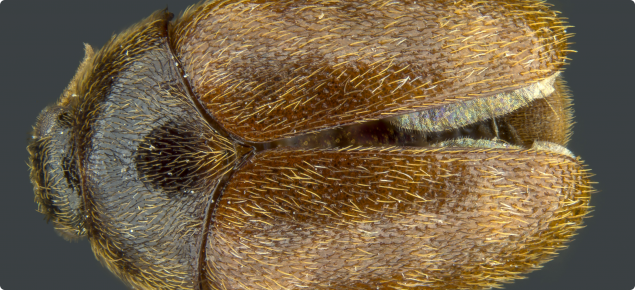Below is an excerpt from the application's project overview:
"This project is designed to address WA biosecurity surveillance and identification gaps for khapra beetle (Trogoderma granarium Everts) in order to future-proof Australian grains market access. Khapra beetle is a major biosecurity pest threat to the Australian grains industry, and the development of appropriate preparedness tools will significantly minimise potential impacts of a khapra beetle incursion in WA. This collaborative project aims to address the biosecurity risk by developing a new diagnostic system using a combination of traditional morphology, molecular biology and visible and near-infrared hyperspectral (VNIH) imaging methods to identify khapra beetle and other related grain pest Trogoderma species. The combined methodologies aim to build up a comparative inventory of unique DNA sequences and VNIH spectra for khapra beetle, the warehouse beetle and a comprehensive range of WA’s native Trogoderma species and related Dermestid species that could potentially be mistaken for khapra beetle. The molecular biology methodology will include assessment of the molecular protocols developed for Trogoderma, published in CRC Final report (CRC 20137, CRC60046), as well as published molecular protocols for khapra beetle (Olson et al 2014). A DNA ‘fingerprint’ type technique will be developed to allow for fast and accurate identification of khapra beetle in the future, using rapid and reliable DNA tests. VNIH imaging is a rapid non-destructive and reagent-less means of monitoring physical and morphological characteristic simultaneously, which has great potential as a diagnostic tool to identify khapra beetle. VNIH systems can record images at hundreds of contiguous wavelengths (narrow spectral resolution) in the form of a hypercube (three-dimensional hyperspectral data). Recorded images will be collected and processed for classification of khapra beetle and a sub-set of related Dermestid specimens. Through data processing, three optimal wavelength bands will be extracted to construct multispectral imaging systems, based on this, a data library, along with standard operating procedures will be generated for each species, which will be available to bulk handlers, quarantine inspectors and importers, offering a rapid, simple and convenient next generation detection technique onsite for khapra beetle and related Dermestids, which will be used to help make decisions in their management.
The project team will share khapra specimens for DNA and spectroscopy work through our collaborating partners at the Indian Agricultural Research Institute (IARI) and the Australia-China joint centre for the prevention and management of exotic invasive species. Coleopteran specimens collected on the swan coastal plain and across the Wheatbelt and material from a national Trogoderma trapping program (CRC20137) will be also be available for diagnostic work. Targeted trapping will be carried out at several regional sites in WA and selected imported food suppliers in the Perth metro area using commercially available khapra traps and lures, to collect typically encountered, related Dermestid beetles that could be mistaken for khapra beetle for use in project experiments. A shared “biobank” of targeted species will be established by the team, with a comprehensive work-flow and chain-of-custody type arrangement for collaborative parties to use for method development and verification purposes. The project will build on existing research knowledge on khapra beetle, verify published diagnostic protocols (PCR) and develop new diagnostic methodologies (hyperspectral, next gen sequencing) to incorporate into the existing national plant biosecurity surveillance strategy. This project will decrease the time required to identify the exotic khapra beetle, a known grain pest, and decrease decision times – from Detection to Eradication – in Western Australia. Molecular and hyperspectral protocols developed in this project will follow National Diagnostic Protocol development guidelines with a “SPHDS ready” focus."
This project is being managed by DAFWA.

![Khapra Beetle [Trogoderma granarium] Diagnostic head front image of Khapra beetle](https://www.agric.wa.gov.au/sites/gateway/files/styles/page_featured_image/public/Trogoderma%20granarium%20headfront.jpg?itok=0inijyM_&c=1cf4014ce5ffe1b4b7f032f1f3b3cd94)
